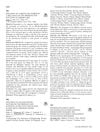an estrogen promoting hair regrowth more commonly used in women
natural substance from Neem tree with medicinal and pesticidal properties
signaling protein that, when suppressed, may grow hair by reducing inflammation and stem cell loss
a natural and far less effective alternative to Finasteride


